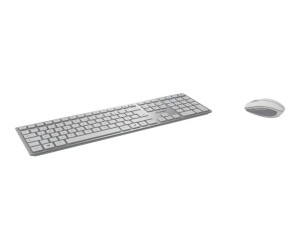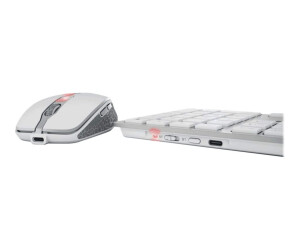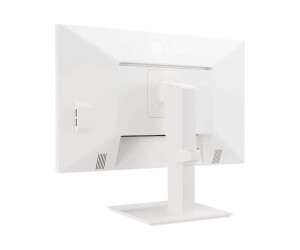Bluetooth 4.0
Bluetooth 4.0
Bluetooth 4.0, also known as Bluetooth Low Energy (BLE), is an improved version of Bluetooth technology designed specifically for transferring small amounts of data over long periods of time. Compared to previous Bluetooth versions, Bluetooth 4.0 offers longer battery life, longer range, and higher data transfer rates.
One of the main advantages of Bluetooth 4.0 is its power-saving feature. Unlike previous Bluetooth versions, which continuously consume power and thus affect the battery life of portable devices such as smartphones and tablets, Bluetooth 4.0 can be put into sleep mode when no data transmission is taking place. This significantly extends the battery life of the devices.
Bluetooth 4.0 also has a longer range compared to previous versions. While Bluetooth 3.0 has a range of about 10 meters, Bluetooth 4.0 can reach a distance of up to 100 meters, making it ideal for applications such as smart home devices and wearables.
In addition, Bluetooth 4.0 offers a higher data transfer rate than previous Bluetooth versions. While Bluetooth 2.0 had a maximum data transfer rate of 3 Mbps, Bluetooth 4.0 can achieve a maximum data transfer rate of 24 Mbps. This allows for faster and more reliable transfer of data.
Another important feature of Bluetooth 4.0 is the Generic Attribute Profile (GATT). The GATT profile enables Bluetooth-enabled devices to transmit data in real time and receive notifications from other devices. This makes communication between devices easier and more efficient.
Bluetooth 4.0 is also compatible with older Bluetooth versions. This means that devices with Bluetooth 4.0 can easily communicate with older Bluetooth devices. This means that you don't have to replace your old devices to take advantage of Bluetooth 4.0.
Another important aspect of Bluetooth 4.0 is security. Bluetooth 4.0 uses strong encryption to ensure that the data being transmitted is secure. This protects your personal data and prevents it from being stolen by hackers
.Bluetooth 4.0 is used in many applications, including wearables, smart home devices, health devices and fitness trackers. One example of Bluetooth 4.0 being used in medical technology is to monitor patients suffering from chronic diseases. The devices worn by these patients can transmit important data such as heart rate, blood pressure and temperature via Bluetooth 4.0 to doctors, who can then take the necessary action.
In consumer electronics, Bluetooth 4.0 is commonly used to transmit audio files and videos. Bluetooth-enabled headphones and speakers can connect wirelessly to smartphones or tablets to stream audio content. In addition, you can also use Bluetooth-enabled TVs and computers to wirelessly send audio files and videos to other devices.
.Bluetooth 4.0 is also used in the automotive industry. It can be used in vehicles to connect the driver's phone to the vehicle for hands-free calling. Bluetooth 4.0 can also be used to stream music and other audio content from a mobile device to the vehicle's audio system.
In the industrial and retail sectors, Bluetooth 4.0 is used for tracking items and managing inventory. Bluetooth 4.0-enabled tags can track items in real time. This can help companies better manage inventory and prevent theft.
Another important aspect of Bluetooth 4.0 is its use in smart-home systems. With Bluetooth 4.0, smart-home devices such as thermostats, lighting systems and security systems can be easily and wirelessly connected. This allows homeowners to control and automate their devices through a single app, resulting in easier and more efficient control of the home.
Some of the drawbacks of Bluetooth 4.0 are that it has limited bandwidth and is not as fast as other wireless technologies like WLAN. Interference with other devices such as WLAN routers and microwaves can also affect signal quality.
Overall, Bluetooth 4.0 offers a number of advantages over previous Bluetooth versions, including longer battery life, longer range and higher data transfer rate. It is also more secure and compatible with older Bluetooth versions. Bluetooth 4.0 is used in a wide range of applications, from wearables and smart home devices to medical devices and the automotive industry. With its power-saving capabilities and ability to transmit real-time data, Bluetooth 4.0 offers many possibilities for the future of wireless technology.
Bluetooth 4.0 also has some special features that make it particularly useful for certain applications. One of these features is low-energy capability. Bluetooth 4.0 devices can switch to a low-energy mode that consumes very little power. This is especially useful for wearables and other battery-powered devices, as they can operate for extended periods of time without recharging.
Another important feature of Bluetooth 4.0 is the ability to maintain multiple connections simultaneously. This allows one device to connect and control multiple devices at the same time. This is especially useful for applications such as fitness trackers, which can be connected to multiple sensors and devices.
Another benefit of Bluetooth 4.0 is its compatibility with other wireless technologies such as WLAN and NFC. By combining Bluetooth with other technologies, new applications and functions can be created. For example, NFC-enabled smartphones can be connected to Bluetooth-enabled headsets for quick and easy connectivity.
Bluetooth 4.0 also offers improved security over previous versions. It uses enhanced encryption to ensure that data is secure during transmission. In addition, Bluetooth 4.0 also enables device authentication to ensure that only authorized devices can communicate with one another.
Another important aspect of Bluetooth 4.0 is its availability. Because it is a widely used technology, Bluetooth 4.0-enabled devices are readily available and affordable. This has helped Bluetooth become one of the most widely used wireless technologies in the world.
In summary, Bluetooth 4.0 offers improved performance, longer battery life, longer range and improved security compared to previous versions. It is also a widely used technology that is used in many different applications. Although there are some drawbacks, such as limited bandwidth and potential interference with other devices, Bluetooth 4.0 offers a wide range of benefits and is an important part of wireless technology.










